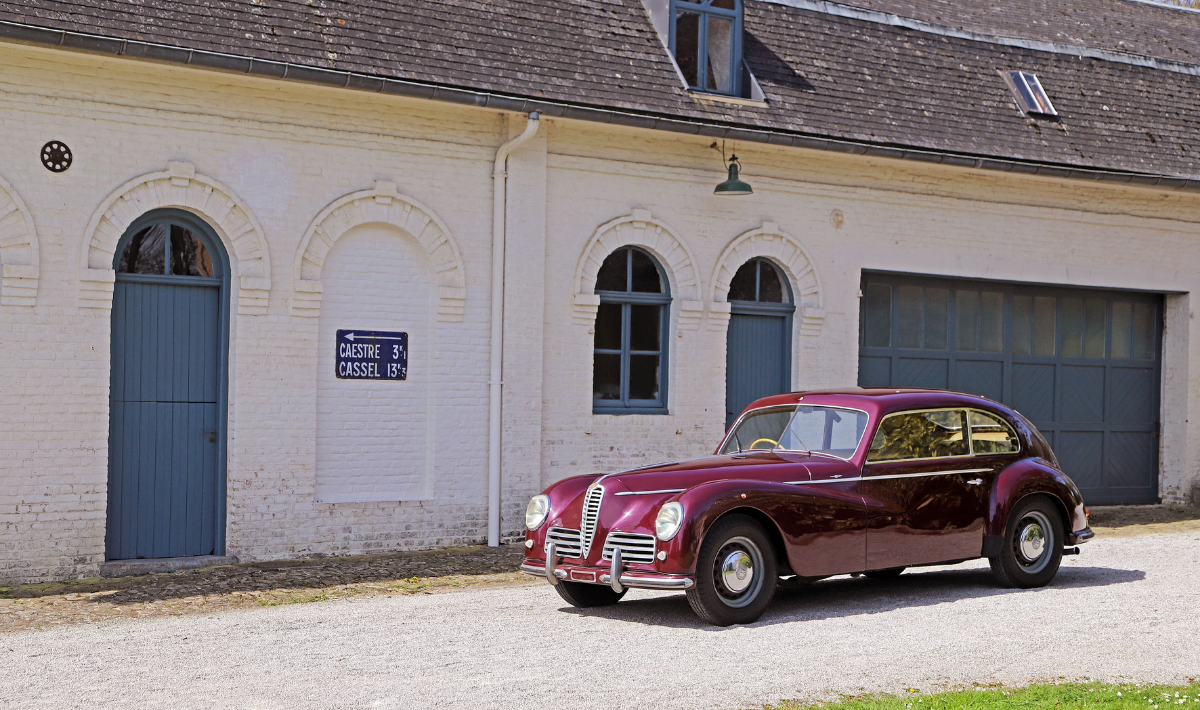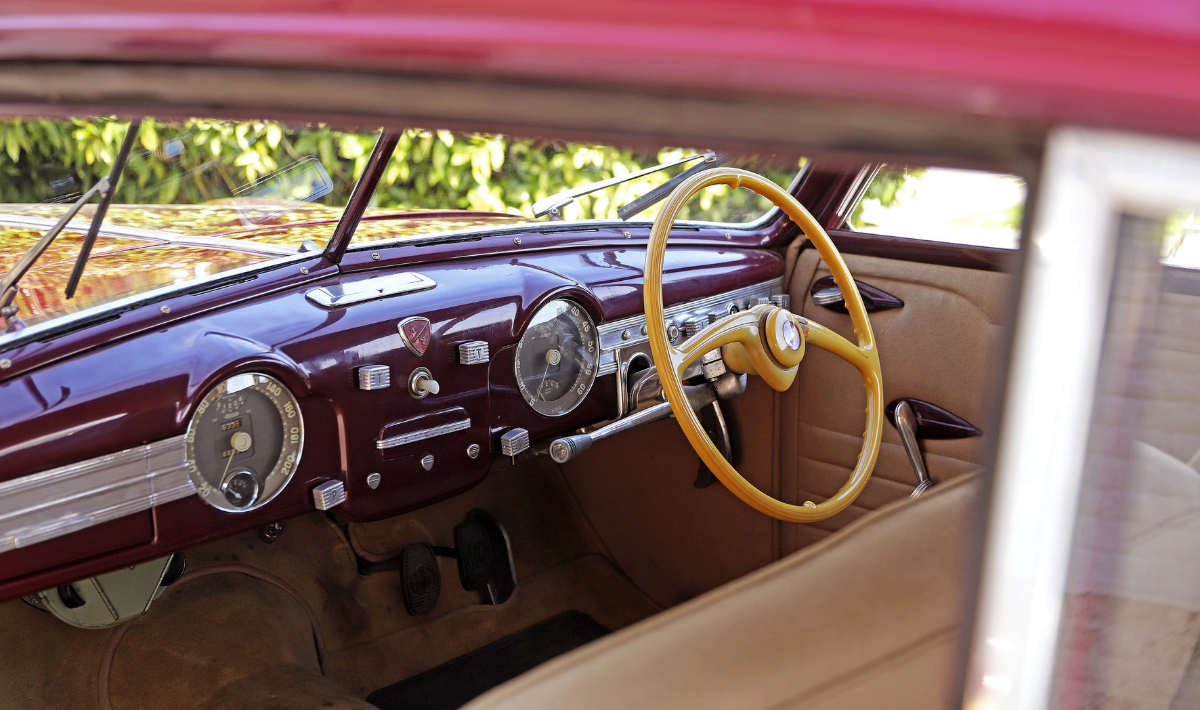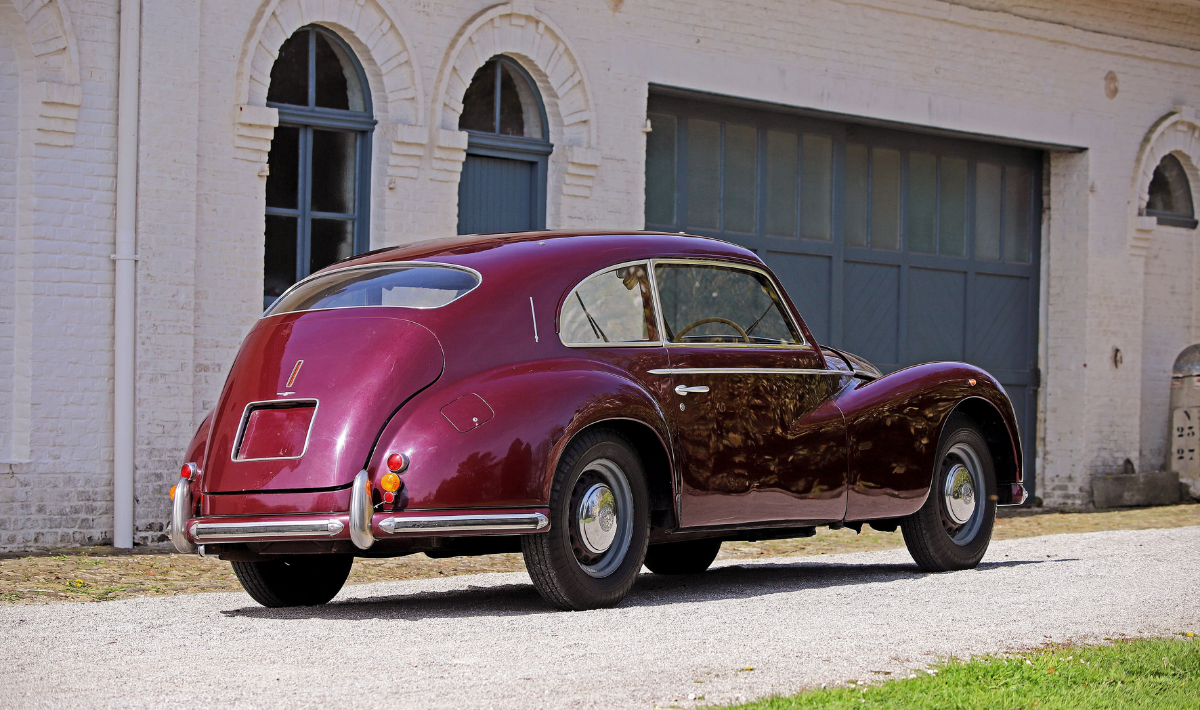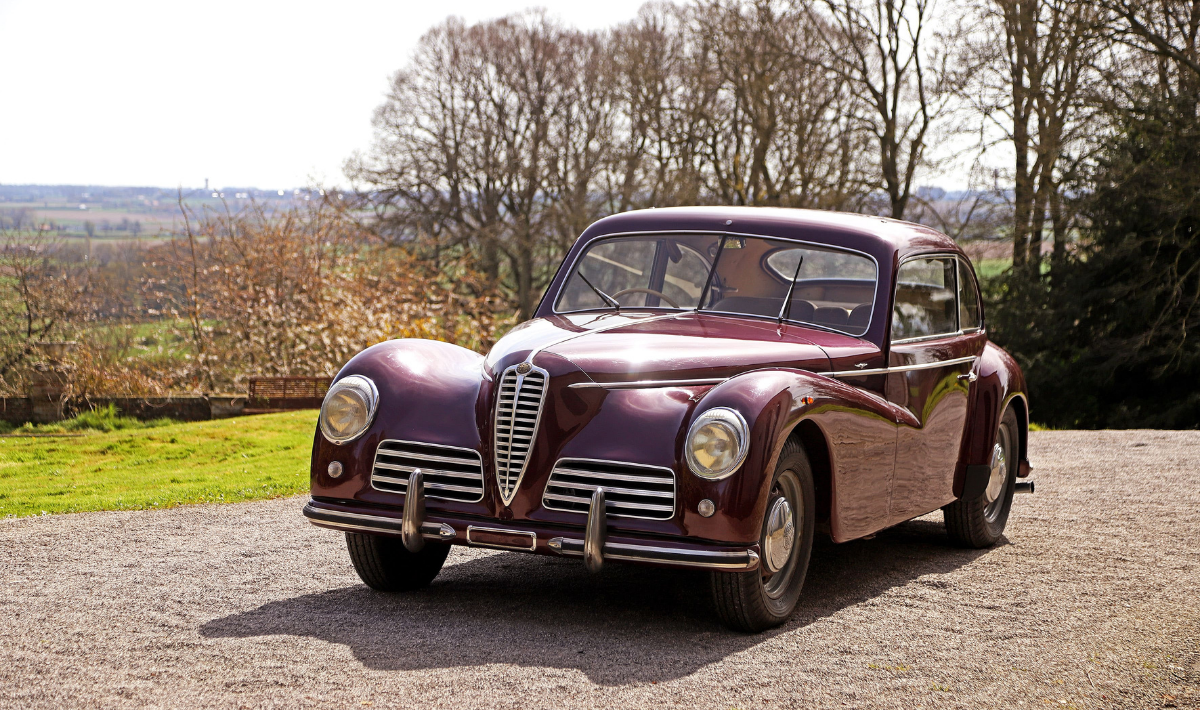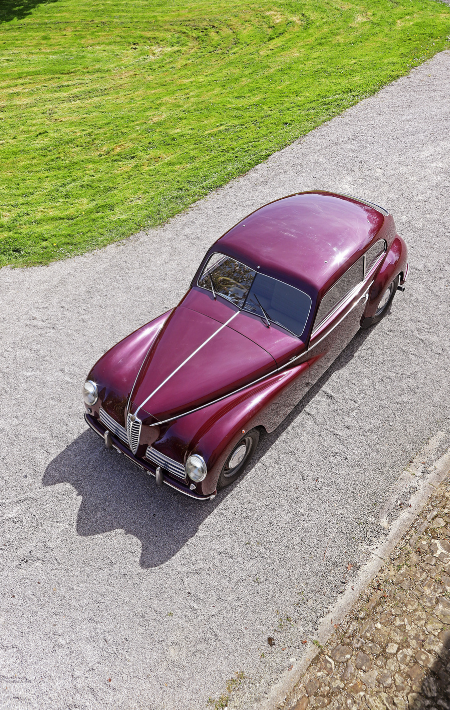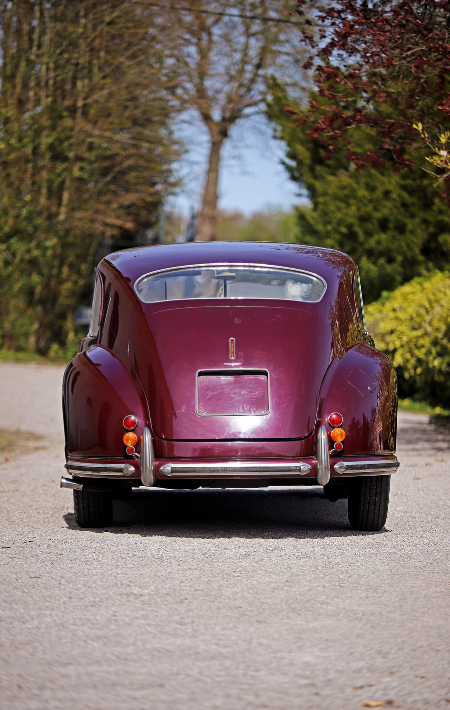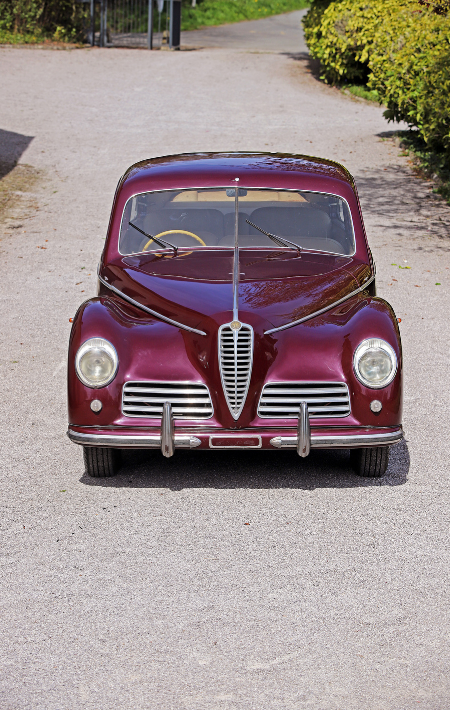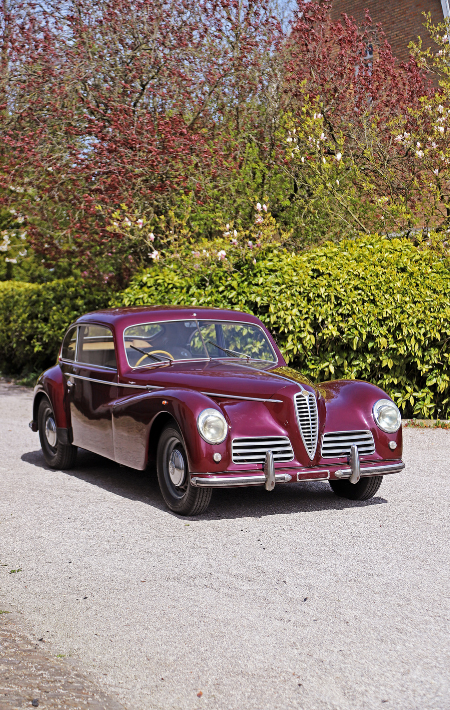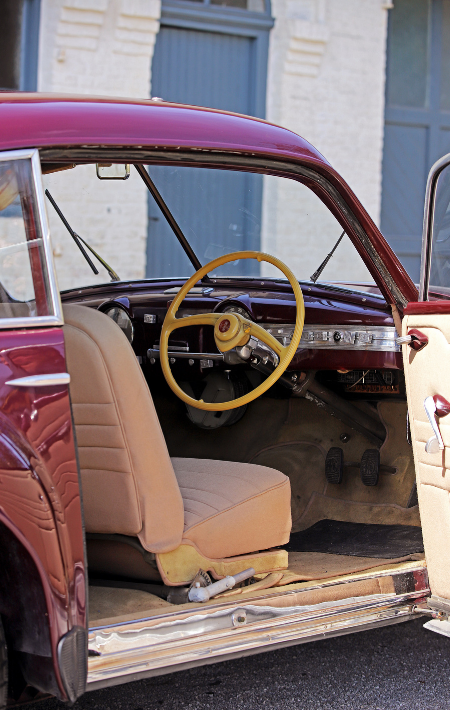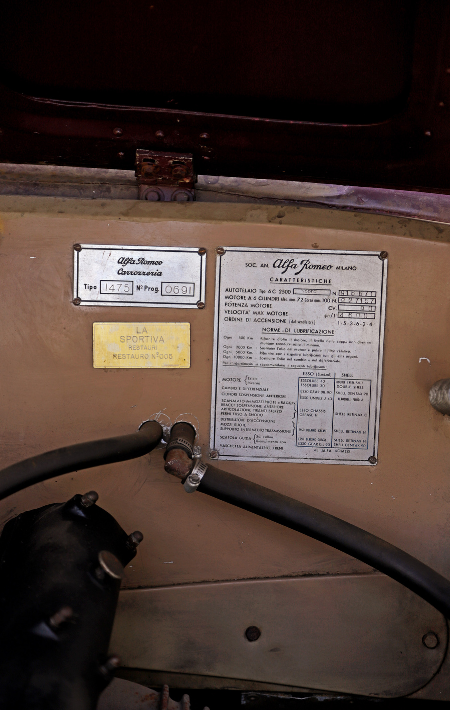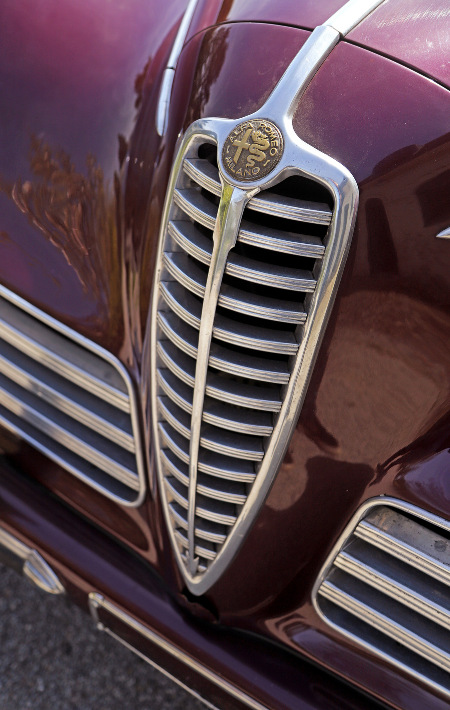Alfa Romeo 6 C 2500 Sport Freccia d’Oro - 1950
— One of the last symbols of Alfa Romeo's artisanal era —- Model One of the last great Alfa Romeo six-cylinder cars made by hand. A very expensive car when new, mostly sold to an international elite with only a hundred cars produced per year.
- History Our car had a 100% Italian history with very few owners, before joining our collection.
- We love A technologically advanced car for its time, delivering relatively high performance given its weight.
- Style A modern and quite “bourgeois” design, yet a bit wobbly with its clumsy rear end.
The Alfa Romeo 6C 2500 Sport Freccia d’Oro marks an important milestone in the company’s history. It is both a symbol of the brand’s newfound splendour after the Second World War, which left the historic Milanese factories in ruins, and of the gradual end of the great six-cylinder Alfa Romeo cars built by hand.
The fact it was both designed, manufactured and sold directly by the company are a mini revolution for the brand. This Alfa Romeo is thus a rare testimony to a pivotal period in the history of the Biscione brand.
A milestone in Alfa Romeo history
The 6C 2.500 launched in 1939 never really disappeared from Alfa Romeo’s offer, even though the war destroyed both the Alfa Romeo factories and the company’s archives.
However, several versions of the 6C 2500 were produced from 1946 onwards and it was only natural that Alfa Romeo intended to keep on selling its 6C 2500 cars until the early 1950s. It must be said that the car, although launched in 1939, was far from being out-dated.
Its noble 2,443 cc double overhead cam six-cylinder engine was truly remarkable to start with. Then, the new chassis with its Porsche-type independent rear axle was also among the most advanced ones available worldwide. As for the drum brakes, they were also far superior from most Alfa Romeo competitors; such as the cable brakes fitted to the early 50s Delahaye cars for example.
The separate chassis of the 6Cs was obviously perfectly suited for the many prestigious coachbuilders who worked on the 6C 2500 in its various variants. If most neglected the long chassis and preferred the shortened Sport ones, the ultimate choice was of course the Super Sport chassis that came with the shortest wheelbase of them all.
This costly and sophisticated technique required extreme care in assembly and the 6C 2500 marks the swan song of the great coachbuilders’ cars based on Alfa Romeo. This is therefore the end of an era in which Alfa Romeo was capable of competing with the most prestigious brands, such as Bugatti or Bentley, to gradually give way to more standard cars powered by the four-cylinder engines produced in series.
In this respect, the 6C 2500 Freccia d’Oro, the first car produced and marketed by Alfa Romeo after the war in 1947 is an important symbol of transition period:
- Firstly because, like all Alfa Romeo 6C 2500s produced after the war, it was one of the last Alfa Romeo cars to be assembled by hand in the Portello workshops,
- Secondly, because it was not an independent coachbuilder who designed it, but the in-house styling department in Milan, which was a real revolution.
- Last, another change was that the bodywork was no longer bolted to the body but welded to the frame rails.
In this respect, the Freccia d’Oro is a transitional car between the purely artisanal and the more industrial eras of the company.
Underneath its “bourgeois” appearance lies a car that is certainly heavy but which still delivers good performance with its 90 hp allowing a top speed of 155 km/h. Indeed, the car raced in the Mille Miglia and brilliantly finished the first edition of the “Carrera Panamericana” in 1950 in fourth and eighth place; not bad for a big coupe!
The Alfa-Romeo 6C 2500 Sport Freccia d’Oro was sold between 1947 and 1952 with very few cars made, 680 in total, i.e. about a hundred cars per year. It must be said that the car was very expensive for its time with a list price of 3,200,000 lire. It was mostly sold to an international elite and several illustrious owners bought a Freccia d’Oro, notably King Farouk of Egypt, Prince Ali Khan but also Rita Hayworth, Prince Rainier of Monaco, etc….
Already a rare car, several sources estimate that a little less than 10% of the initial production still exists today, which makes it de facto a very rare car.
©Aguttes
A car with disconcerting lines and surprising interior comfort
If the Alfa Romeo 6C line has given birth to real automotive masterpieces, the 6C 2500 Sport “Freccia d’Oro”, although clearly inspired by contemporary Touring bodywork, is certainly modern, but more bourgeois and even a little bit clumsy at the rear with its imposing rear wings and bouncy rear trunk. This rounded rear end is often referred as the “big bump”, which translates as the “ gobbone ” in Italian.
This rear is all the more surprising as the front end has much more streamlined and aerodynamic lines. Actually, the whole front and middle of car looks stretched, as evidenced by the long door that runs up to the rear wheel arch.
Similarly, while the Touring Alfa Romeo models were assembled in aluminium using the Superleggera process, the Freccia d’Oro was assembled in steel, making it 250 kilos heavier than the Touring coupé launched the same year, in 1947.
The positive side of this line is the generous habitability that makes the Freccia d’Oro a comfortable and spacious car, especially in the rear where a passenger with a hat is at ease. Similarly, the rear bench seat, designed for two people, can in fact accommodate three without them being squashed together. The access to the rear seat is easy thanks to the very long doors.
The interior is refined with its side armrests, courtesy lights and various refined accessories, such as handles to hold on to when cornering.
The driver has a slightly more spartan view behind the RHD steering wheel. Indeed, the dashboard, typical of cars from the early 50’s, is made of body coloured sheet metal with large and very refined dials and brushed aluminium inserts.
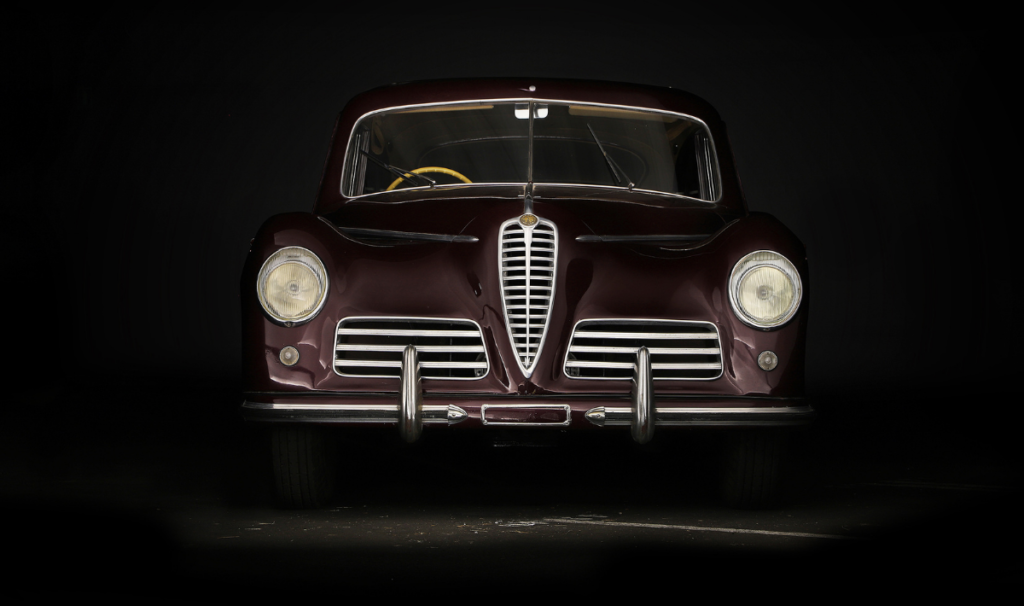
The Freccia d’Oro from the ANNA LISA collection, a car with an Italian history
While most Alfa Romeo 6C 2500 S Freccia d’Oro cars have been exported all over the world, the ANNA LISA Art On Wheels collection car, born in 1950, has a purely Italian history.
Indeed, our car was sold new on 22 January 1951 to its first Italian owner, Mr Constantini Sevilli, who kept it for 37 years. Based on Italian registers and ownership deeds, the car was then sold in 1988 to Mr. Amilcare Spinapolice and Mr. Pietro Piacquadio, both italians. The car was sold again in 1992.
In very good condition, certainly repainted at the beginning of the 90s, our car, which was originally painted in “Rosso Amaranto” colour, has just over 44,000 kilometres on the clock.
It is a superb testimony to Alfa Romeo’s great handcrafted hours and shines alongside the our other Alfa Romeo 6C 2500s.
©Aguttes
